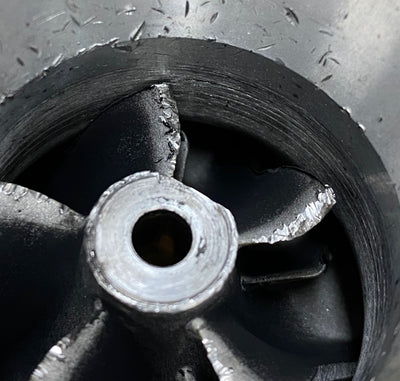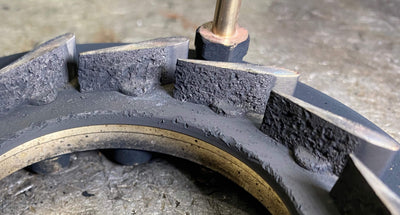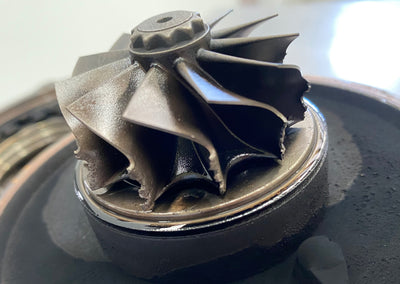- Turbochargers are very reliable: less than 0.5% of turbos fail due to any fault within the turbo itself.
- Almost ALL turbo failures are because of problems with oil contamination, oil starvation, foreign object impact damage, or oil leakage due to excessively restricted air intake/exhaust system.
Before installing a new turbo, always determine and correct the issue which caused theoriginal turbo to fail, or the replacement turbo will almost certainly fail for the same reason.
How do ingested Foreign Objects damage turbos?
A Turbocharger’s turbine and compressor wheels are operating at anywhere between 150,000 and 250,000 RPM, depending upon the specific turbo model.
In addition, the turbine end of the turbocharger can be operating at temperatures approaching 1000 degrees Celsius.
Under these conditions, even the smallest particle entering either the compressor or turbine ends of the turbocharger can lead to total failure.



What are the usual causes of ingested Foreign Object damage?
Compressor wheel (“cold side”) damage is caused by small particles entering the compressor inlet port of the turbo.
- Most commonly, these are small pieces of dust/dirt entering via a damaged air filter element and/or air cleaner housing to turbo, connection hose.
- Catastrophic damage will occur if even a small nut / washer, cleaning rag, or gasket remnant, is accidentally left anywhere in the induction tract during turbo replacement.
Turbine wheel (“hot side”) damage is caused by either pieces of carbon and/or metal entering the exhaust entry port of the turbine.
- This usually occurs due to the lack of, or just simply poor, service of the EGR system at the time of the replacement turbo installation.
- Old gasket remnants are also a common cause of foreign object impact damage. On rare occasions, Injector or Glow Plug tips can also result in this type of damage.
Recommended steps for the prevention of ingested Foreign Object damage.
- VERY CAREFULLY ensure that there are no fragments from the original damaged turbocharger, which is being replaced, anywhere in the intake ducting or just as importantly, in the exhaust manifold.
- VERY CAREFULLY clean the air cleaner housing and inside of the rubber connecting ducting to the compressor inlet port of the turbo. Ensure no cleaning rags are left inside either component.
- VERY CAREFULLY check the surface walls of the rubber ducting connecting the air cleaner housing to the compressor inlet port. Cracks which develop over years of service can be invisible to the eye with the engine stationary, however, open up during engine/vehicle operation, allowing dust/dirt ingress.
- Ensure a brand new, high quality air filter element is installed.
- Ensure all old gasket material is carefully and cleanly removed from all mating surfaces.
- COMPLETELY AND CAREFULLY service the entire EGR system, including replacement of the EGR valve mechanism, if it is not possible to get the valve spotlessly clean. This includes all EGR exhaust gas passageways and must be done after removing the failed turbo and BEFORE installing the replacement turbo. A high- quality solvent and high pressure compressed air should be used where necessary to achieve satisfactory results.
For more information go to www.cateran.com.au or call the Cateran Technical Hotline on 1300 176 071
Download a printable version of this article here





